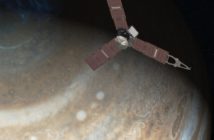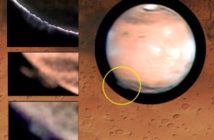Participating to scientific work when you’re an amateur observer, is that possible? Answer is yes! I have talked about it on several occasions on this blog, and here is a must-read on the topic if you’d like to get into that.
The adventure started two years ago during the “4th pro-am school of the CNRS”, a astronomical meeting organized in France every four years by the National center for scientific research (CNRS) and the AUDE association (association of the users of electronic detectors). During this session organized in 2012 in La Rochelle, people attending the meeting enjoyed for the first time a morning dedicated to the gas giants studies. Talks where performed by Ricardo Hueso Alonso (University of Basque country, about the climatic system of giant planets), Marc Delcroix (SAF, about the 2011 saturnian storm) and Jean-Luc Dauvergne (Ciel et Espace journalist /AFA, about planetary imaging). At the end, Olivier Mousis, from Besançon observatory, proposed to the participants to work on a paper who would describe the different domains of possible cooperation in planetary astronomy between amateurs and professionals.
Two years later, the paper has finally been published! It’s the result of an intense work directed by Olivier of no less than sixty co-authors both professionals and amateurs – I had the honor and pleasure to work on the Venus, Mars, and Uranus/Neptune chapters. “Instrumental methods for professional and amateur collaborations in planetary astronomy” describes with around one hundred pages the different domains of possible collaboration, along with the tools and the observing methods one should use. No need to say that this publication is an event!
The paper contains of course chapters dedicated to the study of the different planets of our Solar system: Venus, Mars, Jupiter, Saturn, Uranus and Neptune. But it deals also with other interesting topics:
- meteor showers,
- Impacts (comets/asteroids) on the giants and the Moon,
- Near Earth asteroids (NEAs),
- Comets,
- The Kuiper belt objects (KBOs),
- The exoplanets.
The paper can be downloaded on the link above for $39.95.



